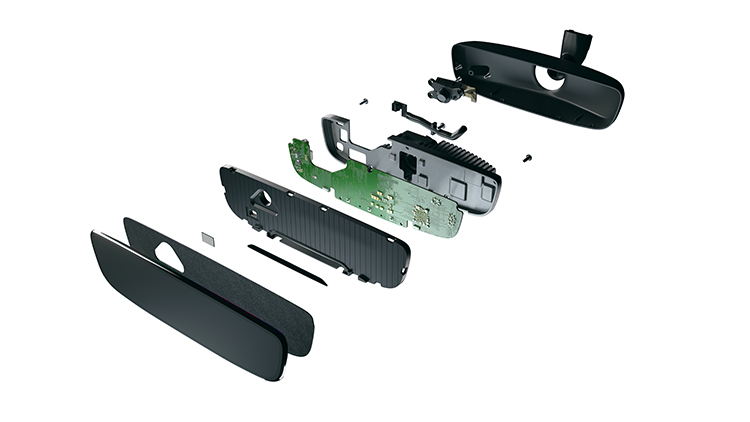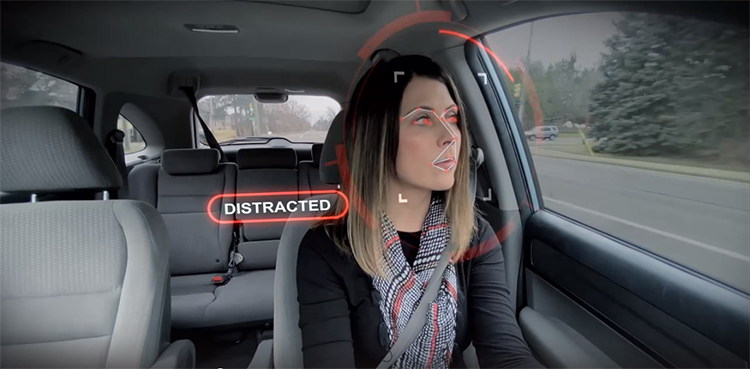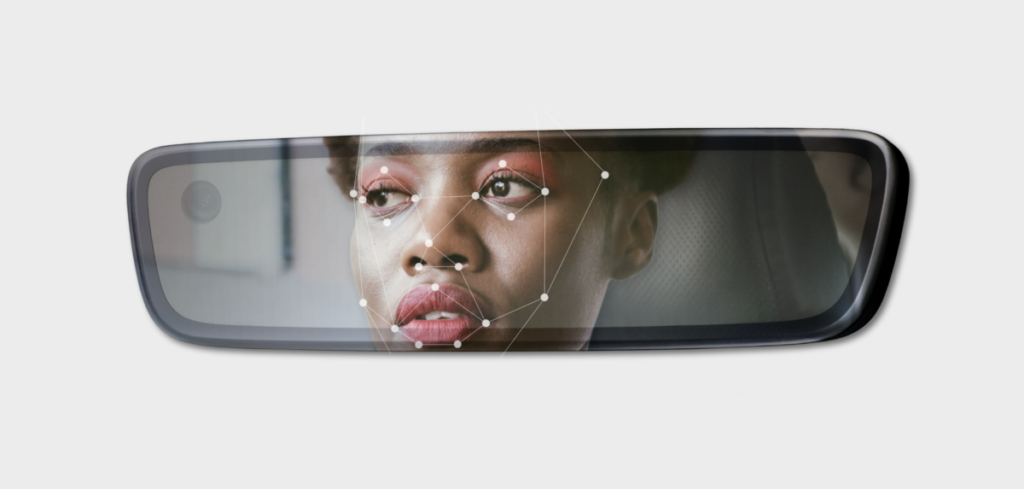
Distracted driving continues to be a problem in the US. One solution to the problem might look something like a new rearview mirror made by the automotive supplier Magna. At first glance, it looks like any other auto-dimming rearview mirror, but it cleverly incorporates a driver-monitoring system, or DMS. It solves a common problem with dash-mounted DMSes, and it's self-contained, so it's mounted in the same way a regular rearview mirror attaches to a car.
Magna gave Ars a demo of the DMS on Wednesday as the company was visiting Washington, DC, for National Distracted Driving Month. That's an awareness thing, not a call to engage in more of it, although newly released crash statistics from the National Highway Traffic Safety Administration show a national trend headed in the wrong direction. More than 3,500 people were killed by distracted driving in 2021, a 12 percent increase over the year before.
Distracted driving encompasses many things—eating, shaving, and applying makeup all count. But technology shoulders a large share of the blame. Between smartphones and infotainment systems, drivers are overloaded with information, and the consequences can be as gory as a Max Headroom episode.
If technology is part of the problem, and since asking people to put down their phones isn't working, technology might have to be part of the solution, particularly if partially automated driving systems like Tesla's Autopilot legally require human oversight.
The good news is that there's already a pretty good solution—infrared cameras with gaze-tracking software have already been shown to work effectively with systems like General Motors' Super Cruise or Ford's BlueCruise. DMSes might even be a legal requirement before long—in 2021, several US Senators proposed exactly such legislation.
Usually, these devices are mounted somewhere on the steering column or main instrument display and keep track of where the driver's eyes are looking. Since the cameras are infrared, they still work at night, and polarized sunglasses are no threat, either. But mounting the camera on the steering column or underneath the dashboard binnacle isn't entirely ideal—to be monitored, the driver's face can't be obstructed by the steering wheel.

Magna's solution is to put the camera into a rearview mirror. The camera and infrared illuminators are embedded behind the glass, with a circuit board containing the necessary electronics for eye tracking. And since the camera is mounted high up in the cabin and has a wide field of view, it could also monitor the other occupants if desired.
Privacy-focused readers should rest easy—this DMS does not record video, nor can it pass video into anyone's cloud. All the processing happens in the mirror, with the car just being given alerts if the mirror detects the driver is looking in the wrong area for too long. (In the past, Volvo has told us its DMSes work in a similar fashion.)
It's an attractive solution for OEMs because it's fitted to a car during assembly just like any other rearview mirror, and Magna will make both electrochromic (auto-dimming) and manual dimming versions. The company is also working on building the DMS into the kind of video rearview mirror that you'd find in something like a Chevrolet Bolt, although giving the infrared camera enough of an unobstructed view through the LCD display to work accurately is a work in progress, I'm told.
Magna has signed its first customer for the DMS mirror, but until that OEM makes the relationship public, all Magna can tell us is that it's a German automaker. Expect to see the first models sporting this mirror on the road in Europe early next year, then here in the US by fall 2024.



3175x175(CURRENT).thumb.jpg.b05acc060982b36f5891ba728e6d953c.jpg)
Recommended Comments
There are no comments to display.
Join the conversation
You can post now and register later. If you have an account, sign in now to post with your account.
Note: Your post will require moderator approval before it will be visible.